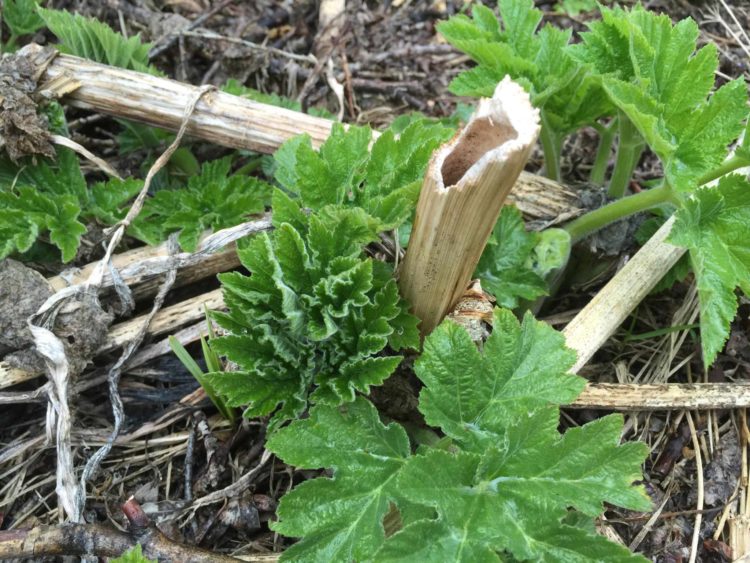
I gathered some cow parsnip a few days ago on June 15th. It’s still young in the high country (at 10,500 feet), so I just took a little—a few snips here and there of furled, unfurling, and newly unfurled woolly green leaves and petioles (leaf stalks), from a community of plants, no more than two and usually just one cutting per plant.
At home I prepared the same old tried and true recipe I got from Kathryn G. and Andrew L. March’s Common Edible and Medicinal Plants of Colorado (1979)—boiled, drained, and squeezed cow parsnip leaves and petioles with finely chopped raw onions, soy sauce, and butter—and relished every minute of it. It’s a crazy weird taste, but I continue to love it.
When you use the very young, still furled or unfurling leaves, you don’t need to peel the leaf stalks. Later in the season, the leaf stalks and flower stalks can be used while still tender, but they need to be peeled. Some folks enjoy dipping these in sugar, although they can also be enjoyed raw as a trail snack or chopped into cooked preparations.
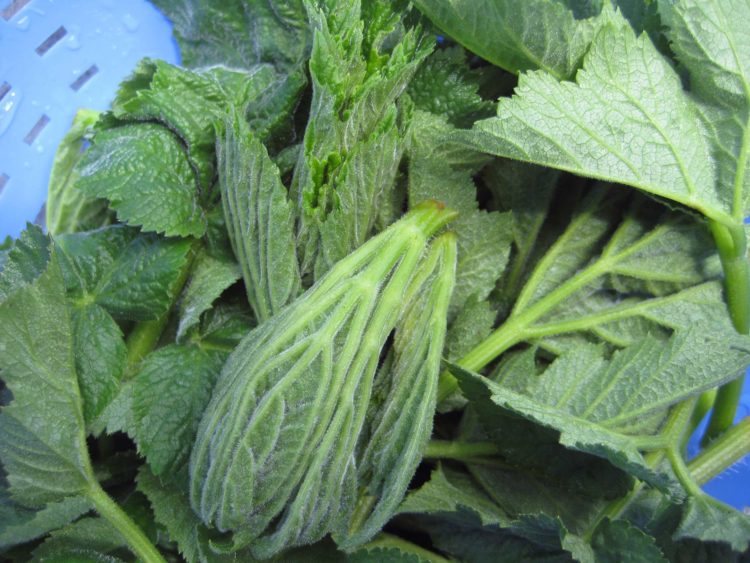
Cow parsnip grows in wet ground and smells like it tastes—“wild and woolly” as the Marches put it—which makes it easier to confirm identification in the field. Finding it this year was a different experience than last year. The water is really running strong right now, so last year’s easily-crossed brook was a gushing, multi-channeled torrent, requiring careful balanced fording via fallen tree—but I made it back to the patch I’d found last year and was as excited as ever to spy the first young cow parsnip leaves emerging from the bases of last year’s long dead stalks. These stalks terminate in a symmetrical umbel-shaped skeleton.
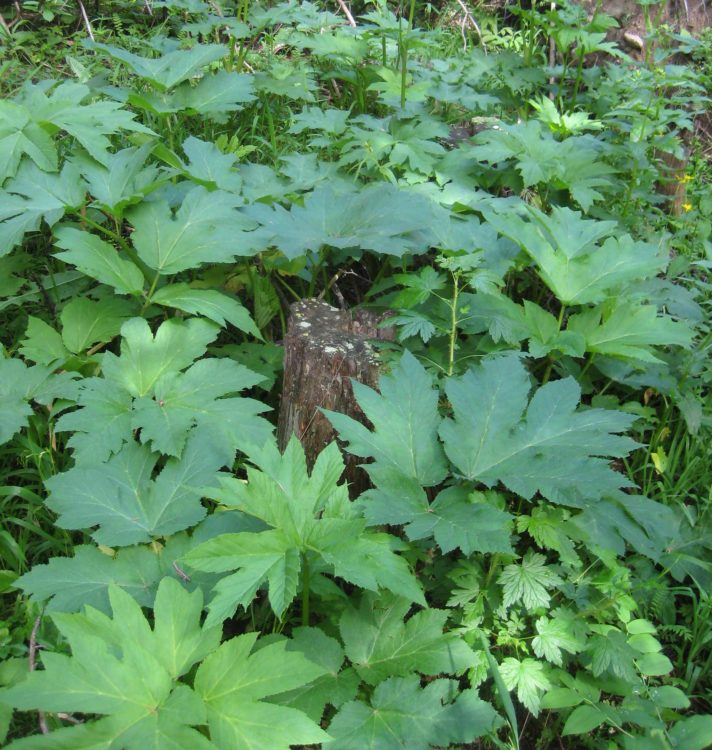
Cow parsnip can cause severe burns if you collect it in direct sun while sweating—so heed that warning if you find yourself in such conditions. I have never experienced this. It may be more of a problem in sunny, hot regions. Cow parsnip also bears a passing resemblance (primarily in the white, flowering umbels that appear later in the season) to the extremely toxic water hemlocks (Cicuta spp.) and poison hemlock (Conium maculatum), so careful identification is in order. Unlike the hemlocks, however, cow parsnip has big leaves composed of 3 (sometimes 2) palmate leaflets—although this characteristic is less obvious when they’re young.
For this reason, finding cow parsnip with certainty was a two-year process for me; the first year I waited until the plants were mature to make certain of my identification, and the second year I returned to the same spot to collect and eat the young leaves.
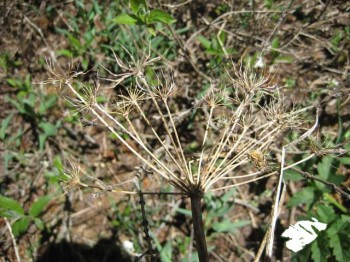
“You’re never going to guess what I ate today,” I told Gregg, who was off in Oregon coaching snowboardcross at the time.
“Fireweed?”
“No.”
“Cow parsnip?”
“Yes!” He got it on the second try. I jumped up and down in excitement.
“Is there some for me?”
“Well, there’s a little left,” I hedged, “but there’s a good chance we’ll have to go get some more when you get home because I can’t promise I’m not going to eat it.”
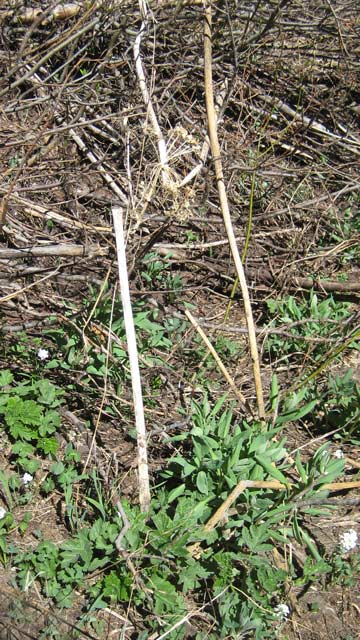
I think cow parsnip season will last a couple more weeks up here in the high country. The days are yet to come when I need to reach underneath the more mature leaves to get to the new growth; currently, the youngest leaves are all that are showing in my foraging grounds. If you’re interested in foraging cow parsnip in the high country, then now’s the time.
Caution: Thayer (2010) describes a related plant, giant hogweed (H. mantegazzianum), which has become invasive in areas of Ontario, the eastern US, the Pacific Northwest, and elsewhere, that is “extremely dangerous” in terms of its potential to burn the skin and eyes. He thinks it “might” be edible, but readers should regardless exercise caution with H. mantegazzianum, which has more deeply cut leaf lobes and can grow to 16 feet tall.
Updated 3.2.21

This is very interesting! I may just have to try some myself next spring.
This plant is amazing. Through all my reading of it there are so many useful parts. For the past few years I’ve told myself I would try it. Every year comes though and I find myself very nervous about properly identifying it (all the ones I’ve found are fuzzy, large leaved, and look exactly like these and Chef Alan’s pictures) harvesting and properly preparing it. Maybe this year will be my year.
Thank you for being you! I hope you are doing well!
Aw, thank you Katie. Yes, life is good now. I hope this is the year for you for cow parsnip!